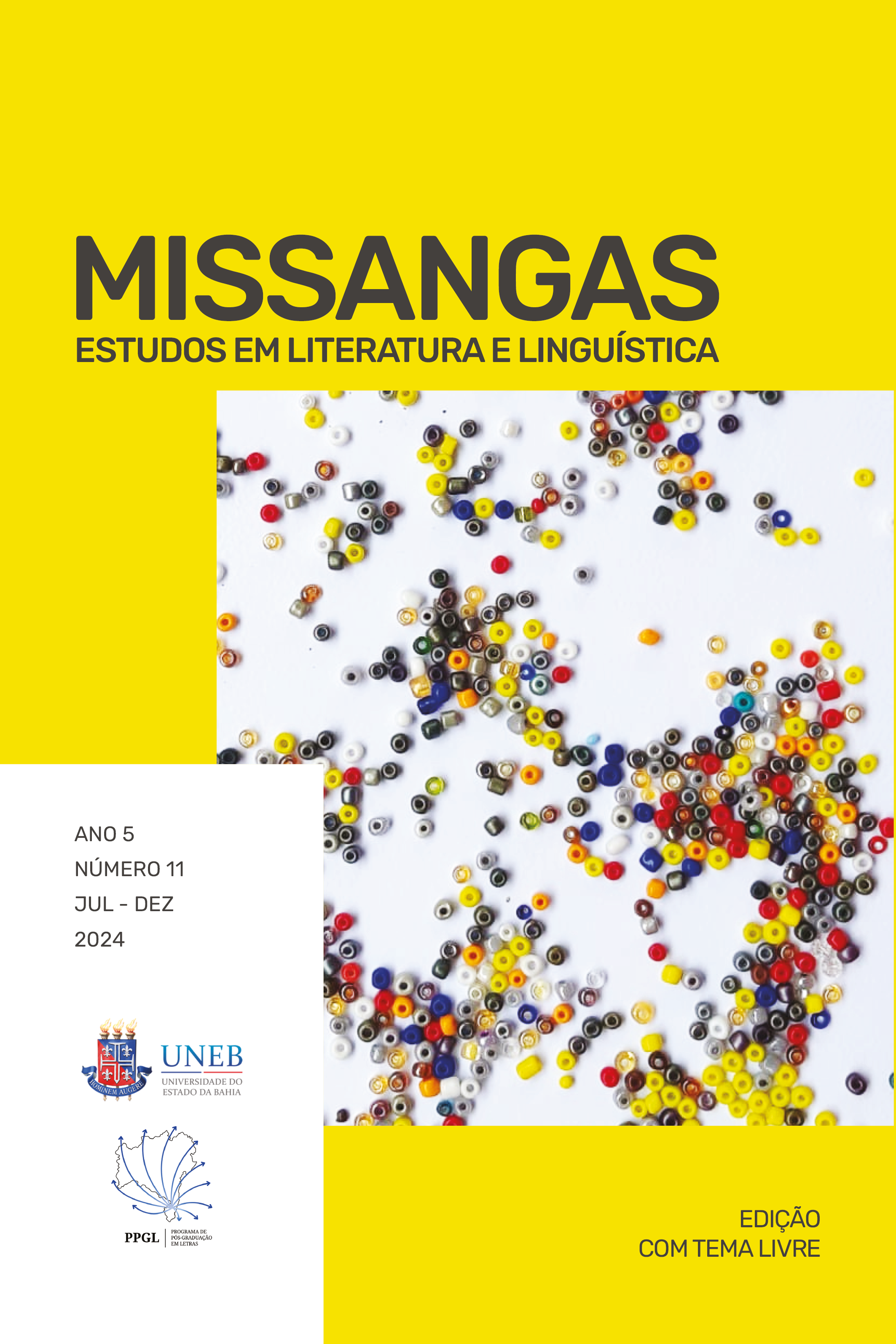THE REPRESENTATION OF THE VAGINA AS AN INVERTED PHALLUS AND THE DISSIDENCE OF GENDER AND SEXUALITY IN THE SHORT STORY "THE SWORD AND THE ROSE" BY MARINA DE COLASANTI
THE REPRESENTATION OF THE VAGINA AS AN INVERTED PHALLUS AND THE DISSIDENCE OF GENDER AND SEXUALITY IN THE SHORT STORY "THE SWORD AND THE ROSE" BY MARINA DE COLASANTI
DOI:
https://doi.org/10.53500/missangas.v3i11.21718Keywords:
Bodies; Dissent; Phallus; Gender; Sexuality.Abstract
In this article, analyze the research entitled: “The representation of the vagina as an inverted phallus and the dissidence of gender and sexuality in the short story ‘Between the sword and the rose’ by Marina Colasanti”, in which the gradual social dialectical process that focuses on the anatomical difference between the sexes and gender and sexuality issues that involve the characters is considered, namely: a young Princess and a young King. In this proposition, the process of adaptation and social acceptance that involves a gender dissident (Princess) and the ambiguous sexual expression of the young King is considered. In this context, the female character stands out for her comings and goings between traditional meanings versus progressivism, considering the composition of current themes, for example: gender and sexuality that are pluralized in the set of discussions involving the human social sciences. In this research, the studies of Sigmund Freud, with greater emphasis, regarding the psychic consequences involved in the castration complex, Judith Butler and Pierre Bourdieu regarding gender and sexuality issues, corroborate with greater emphasis. In addition, other references, of lesser theoretical inference, also corroborate the effectiveness of the analysis proposed in the corpus of the Article. It is concluded that the short story "Between the Sword and the Rose" symbolizes, allegorizes, metaphorizes, in semantic and semiotic terms, the performative perspective of bodies that are not limited in the meanings of gender (male and female) and sexuality guided by heteronormativity.
Downloads
References
ANDRADE, Carlos Drummond de. A rosa do povo. 1. ed. São Paulo: Companhia das Letras, 2012.
AZEVEDO, Álvares de. Lira dos vinte anos. 2. ed. São Paulo: FTB, 1997.
BARROSO, Juarez. As rosas não falam. Disponível em: https://genius.com/Cartola-as-rosas-nao-falam-lyrics. Acesso em: 19 ago. 2024.
BERMAN, Marshall. Tudo que é sólido desmancha no ar: a aventura da modernidade. Tradução: Carlos Felipe Moisés. São Paulo: Companhia das Letras, 1986.
BÍBLIA. Português. A Bíblia Sagrada. Trad. João Ferreira de Almeida. São Paulo: Sociedade bíblica Trinitariana do Brasil, 2007. Edição corrigida e revisada, fiel ao texto original.
BOURDIEU, Pierre. A dominação masculina. Tradução: Maria Helena Kühner, 15. ed. Rio de Janeiro: Beltrand Brasil, 2019.
BUTLER, Judith. Corpos que importam: os limites discursivos do sexo. Tradução: Veronica Daminelli e Daniel Yago Françoli. 1. ed. São Paulo: Crocodilo, 2020.
CHEVALIER, Jean & GHEERBRANT, Alain. Dicionário de Símbolos: mitos, sonhos costumes, gestos, formas, figuras, cores, números. Tradução: Vera Costa e Silva, Raul de Sá Barbosa, Angela Melim, Lúcia Melim. 34. ed. Rio de Janeiro: José Olympio, 2020.
COLASANTI, Marina. Um espinho de marfim e outras histórias. Porto Alegre: L&PM, 1999.
COLASANTI, Marina. Doze reis e a moça no labirinto do vento. São Paulo: Global, 2006.
FARINA, Modesto. Psicodinâmica das cores em comunicação. 4. ed. São Paulo: Edgard Blücher, 1990.
FREUD, Sigmund. Obras completas, volume 16: O eu e o id, “Autobiografia” e outros textos (1923-1925). Tradução de Paulo César de Souza. São Paulo: Companhia das Letras, 2011.
FONTANILLE, Jacques. Semiótica do discurso. 1. ed. Tradução de Jean Cristtus Portela. São Paulo: Contexto, 2008.
SANTAELLA, Lúcia. O que é semiótica. São Paulo: Brasiliense, 2012.
SECCHIN,Antonio Carlos. A rosa, o povo. In: ANDRADE, Carlos Drummond de. A rosa do povo. 1. ed. São Paulo: Companhia das Letras, 2012
SILVA, Kalina Vanderlei. Dicionário de conceitos históricos. 3. ed. São Paulo: Contexto, 2021.
Downloads
Published
Issue
Section
License
Os artigos publicados na revista Missangas são de inteira responsabilidade de seus autores e não refletem, necessariamente, o pensamento dos editores.


